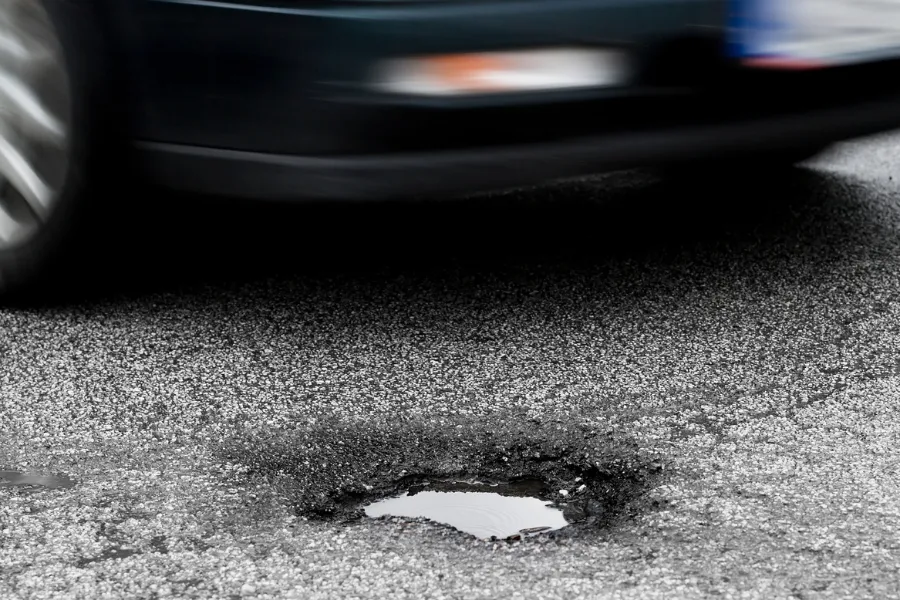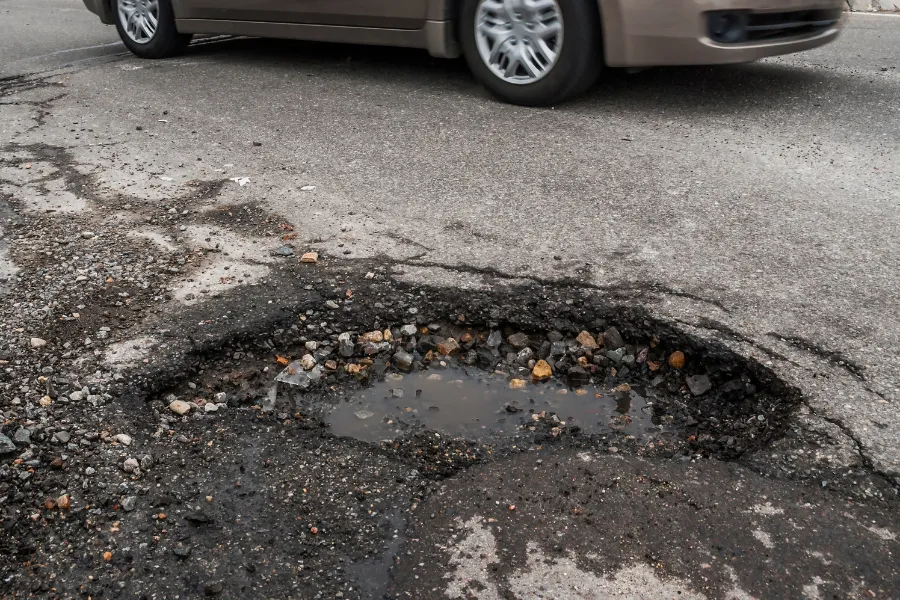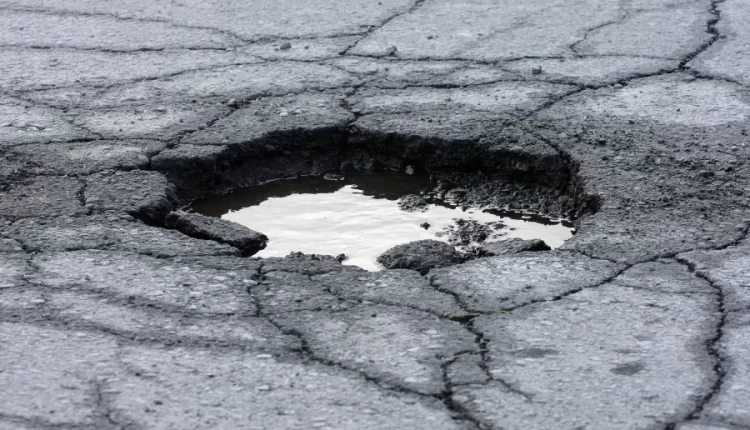If you’re from Toronto, you’ve likely encountered at least a couple of potholes, particularly during spring when the snow of winter melts off and the roads showcase all the damage they incurred during the winter. Potholes are not just frustrating. They can cause serious harm to your tires, rims, suspension, and alignment
Understanding what to inspect and how to react can save you stress, time, and money. Throughout this guide, we’ll discuss what to do right after you hit a pothole, what to inspect for as signs of damage, and how to avoid issues down the road.
Step 1: Pull Over When It’s Safe
Don’t panic or slam your brakes. Slow down and pull over to a safe spot to stop – a nearby parking lot or side street is best. If on a busy highway, such as the DVP or 401, turn on your hazard lights and take the next exit.
Stopping provides an opportunity to look at the damage immediately before driving makes it even worse.
Step 2: Do a Visual Check
Start with a walk-around. Even if your car seems fine, damage can be hidden.
Check the tires:
Bulges in the sidewall: This usually means internal tire damage. The cords inside may have snapped, weakening the structure.
Cracks or cuts: Look for visible slices or tears, especially along the outer edge.
Low or uneven pressure: If you have a tire gauge or TPMS (tire pressure monitoring system), check pressure right away.
Check the rims:
Bent or dented rims: This is common after hitting a pothole at speed. Even a small bend can cause air leaks or affect your handling.
Cracked rims: These are more serious and usually require full replacement.
Take photos if you spot any damage. It can help later if you need to make a repair claim with the city.
Step 3: Feel for Handling Changes
Once you get back on the road (if it’s safe to do so), pay close attention to how your car feels.
Pulling to one side: Your alignment may be off.
Vibrations: This can come from a bent rim, damaged tire, or even a misaligned suspension component.
Steering feels loose or shaky: You may have damaged tie rods or ball joints.
Unusual noises: Clunks, rattles, or grinding are red flags.
If you notice any of the above, it’s best to head straight to a mechanic or tire shop.

Step 4: Get a Professional Inspection
Even if there are no obvious issues, hidden damage can still exist – especially if you hit the pothole hard. Have a professional check your:
1. Tires
They’ll inspect for internal damage, slow leaks, or sidewall separation. A tire that looks fine can still fail under pressure.
2. Rims
Bent rims may not cause immediate issues, but over time, they can lead to tire blowouts or loss of air pressure.
3. Alignment
Misalignment doesn’t just affect steering – it wears down your tires faster and reduces fuel efficiency.
4. Suspension
Shocks, struts, and control arms take a lot of the impact. If they’re damaged, your car may ride poorly or lose stability.
Local auto shops or tire repair specialists in Toronto can usually perform a full inspection. If you need rim repair, the team at Tire Change can help with that, too!
Step 5: Report the Pothole to the City of Toronto
If you hit a pothole on a public road, you may be eligible for compensation. It’s worth reporting it – and it only takes a few minutes.
How to report:
Call 311 or use the City of Toronto’s pothole report form (if you are not in Toronto, contact the city or town where the pothole accident took place)
Be ready to provide: the street name, nearest cross street, lane direction, and any photos you took.
If the city is found liable, you might be able to recover repair costs (though it can take some time).
Step 6: Know When to Replace vs. Repair
Not all damage means replacing a tire or rim, but sometimes it’s necessary.
Replace the tire if:
-You see a sidewall bulge.
-There are deep cuts or exposed cords.
-It keeps losing pressure.
Repair the rim if:
-There’s a minor bend that doesn’t affect sealing or safety.
-It can be reshaped by a professional.
Replace the rim if:
-There are cracks.
-It can’t form a proper seal with the tire.
-The bend is large or affects your steering.
At Tire Change, we offer rim repair services right here in Toronto. We’ll let you know if your rim can be safely fixed or if it needs replacing.

Step 7: Prevent Future Damage
You can’t avoid every pothole, but you can reduce the risk of serious damage.
Keep your tires properly inflated: Underinflated tires are more vulnerable to impact.
Avoid puddles when possible: They often hide deep potholes.
Slow down in rough areas: Lower speed = less damage if you do hit one.
Stay alert in spring: Potholes are worst after freeze-thaw cycles.
Also, get your car inspected regularly. A quick detail or tire service can help catch early signs of damage.
Final Thoughts
Potholes are a part of life in Toronto and the nearby cities. While some are small annoyances, others can cause serious – and expensive – damage. Acting quickly, getting your car checked, and knowing what to look for can make a big difference.
At Tire Change, we specialize in more than just seasonal tire swaps. From rim repairs and tire replacements to expert inspections and professional tire storage, we’re here to keep your vehicle road-ready after any unexpected pothole hit. Whether you’ve noticed handling issues or just want peace of mind, our Toronto-based team is ready to help.
Need help after hitting a pothole? Book a service with Tire Change – we’ll take care of your tires, rims, and everything in between.


